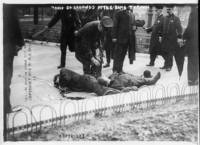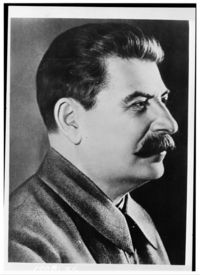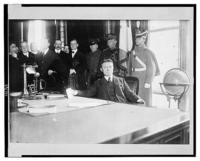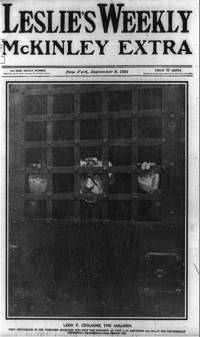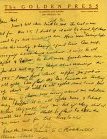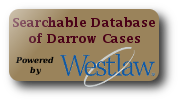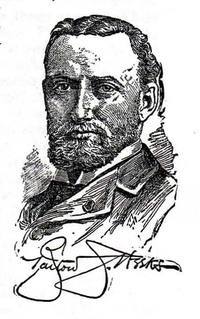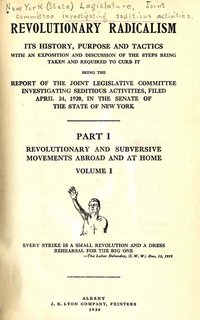The Gitlow Case (1920)
"These two defendants, Gitlow and Larkin, are beyond doubt two of the prominent leaders in this revolutionary scheme. They are men of intelligence, with considerable experience in public affairs, and all this either from honest fanaticism or muddled thought they have perverted into the most dangerous channels. As they stand to-day, as against the organized government specified in the statute, they are positively dangerous men."
– Chief City Magistrate William McAdoo of New York holding Benjamin Gitlow and James Larkin for the grand jury on criminal anarchy charges."He would make America a Red Ruby in the Red Treasure Chest of the Red Terror."
– Assistant District Attorney Alexander I. Rorke describing the threat posed by Benjamin Gitlow."Is anybody afraid of revolution? For a man to be afraid of revolution in America would be to be ashamed of your mother. Nothing else. Revolution? There is not a drop of honest blood in a single man that does not look back to some revolution for which he would thank his God that those who revolted won. None of you. Take the revolutions out of Great Britain, and what is left. Take them out of France and you would have the absolute despotism with the people as slaves. What of our own country? We are 150 years old or thereabouts, and we now speak about revolution as if we were speaking of cutting a man's throat, a nation born in it, born in it!"
– Clarence Darrow's closing argument in defense of Benjamin Gitlow.
|
New York City Chief Magistrate William McAdoo's decision to bind Gitlow and Larkin over to the grand jury for violating New York's criminal anarchy statute.
Benjamin Gitlow appealed his conviction for violation of New York's criminal anarchy statute (Penal Law, sections 160 and 161). Gitlow argued that he was entitled to a certificate that there was a reasonable doubt whether the judgment of conviction against him should stand because the indictment failed to set forth such facts as would be sufficient to bring him within the prescribed definitions given to this class of crime under Section 160. The court denied the motion for a certificate of reasonable doubt.
People v. Gitlow, 39 N.Y.Crim.R. 120, 187 N.Y.S. 783 (N.Y.App. Div. 1921).
Benjamin Gitlow appealed his conviction for the crime of criminal anarchy, and also from orders denying his motions to set aside the verdict and in arrest of judgment. The court upheld Gitlow's conviction.
People v. Gitlow, 234 N.Y. 132, 136 N.E. 317 (N.Y. 1922).
The Court of Appeals of New York, the state's highest court, upheld Gitlow's conviction. The court ruled that Penal Law, sections 160, 161, making it a felony to advocate criminal anarchy, defined as the doctrine that organized government should be overthrown by force or violence, assassination, etc., do not violate the First Amendment of the Constitution or Art. 1, sec. 8 of the New York Constitution. relative to freedom of speech and of the press. Judge Pound wrote a dissenting opinion which was joined by Judge Cardozo.
Gitlow v. People of State of New York, 268 U.S. 652, 45 S.Ct. 625 (1925).
The United States Supreme Court affirmed Benjamin Gitlow's conviction of the statutory crime of criminal anarchy. Justice Holmes wrote a dissenting opinion which Justice Brandeis joined.
Benjamin Gitlow was convicted of violating sections 160 & 161.
Several references are made to Benjamin Gitlow.
Sedition: Hearings Before the Committee on the Judiciary, House of Representatives, Sixty-sixth Congress, Second Session (1920).
Hearings held on February 4 & 6, 1920 to discuss several sedition bills. Among those testifying were Attorney General of the United States Mitchell Palmer, New York Attorney General Charles D. Newton and Samuel Gompers, president of the American Federation of Labor. The Gitlow and Larkin case was discussed. Attorney General Newton testified: "Yesterday, we obtained the conviction of Benjamin Gitlow, who was a former member of the Assembly of New York; he was elected on the socialist ticket and had become a communist; and he published the manifesto of the Communist Party. He was well defended, I have no doubt, no less a personage defending him than Clarence Darrow." (p. 140).
"The Left Wing Movement in the Socialist Party of America" (Lusk Committee Report) (1920).
Chapter from the Lusk Committee Report that contains references to Benjamin Gitlow and James Larkin. The New York State Legislature established the Joint Legislative Committee to Investigate Seditious Activities pursuant to Concurrent Resolution, March 26, 1919. The committee was headed by Senator Clayton R. Lusk. This committee was given broad authority to investigate individuals and organizations in New York who were suspected of promoting the overthrow of the United States government in violation of the criminal anarchy articles of New York's Penal Code. New York enacted these criminal anarchy statutes in 1902 in response to the assassination of President McKinley by Leon Czolgosz an anarchist in Buffalo New York in 1901. President McKinley was shot on September 6, 1901 and died on September 14, 1901. Except for a previous minor case, this large scale investigation by the Lusk Committee was the first time that the criminal anarchy statutes had been used to prosecute anyone since their enactment in 1902.
The Lusk Committee spent over a year gathering extensive information on suspected radical groups using forceful investigative techniques such as raiding the offices of suspected organizations, examining documents and infiltrating meetings. The Committee also assisting law enforcement agents in the arrest of thousands of suspects, and subpoenaing witnesses for the Committee hearings. A number of individuals including Benjamin Gitlow and James Larkin were convicted of violating the criminal anarchy statues. The Committee's investigation officially ended in April 1920 when it submitted its final report to the legislature.
Revolutionary Radicalism: Its History, Purpose and Tactics with an Exposition and Discussion of the Steps Being Taken and Required to Curb It (Volume I) (1920).
Being the Report of the Joint Legislative Committee Investigating Seditious Activities, Filed April 24, 1920, in the Senate of the State of New York By New York. Part I Revolutionary and Subversive Movements Abroad and at Home. Joint Legislative Committee to Investigate Seditious Activities, Clayton Riley Lusk. (Volume 1 of the Lusk Committee report)
Reference to Clarence Darrow in Lusk Committee Report (1920).
Short reference to Clarence Darrow from volume II of the Lusk Committee report. The reference begins at the bottom of page one and ends on the top of page 2 of this excerpt.
Revolutionary Radicalism: Its History, Purpose and Tactics with an Exposition and Discussion of the Steps Being Taken and Required to Curb It (Volume II) (1920).
Volume II of the Lusk Committee report.
Revolutionary Radicalism: Its History, Purpose and Tactics with an Exposition and Discussion of the Steps Being Taken and Required to Curb It (Volume III) (1920).
Volume III of the Lusk Committee report.
Revolutionary Radicalism: Its History, Purpose and Tactics with an Exposition and Discussion of the Steps Being Taken and Required to Curb It (Volume IV) (1920).
Volume IV of the Lusk Committee report.
Article about New York's Criminal Anarchy Act that Benjamin Gitlow was convicted for violating.
"They are Positively Dangerous Men": The Lost Court Documents of Benjamin Gitlow and James Larkin Before the New York City Magistrate's Court, 1919, Thomas C. Mackey, 69 N.Y.U.L. Rev. 421 (1994).
Article by Professor Mackey published in New York University Law Review. Discusses the importance of the Gitlow case and reproduces the opinion written by New York City Chief Magistrate William McAdoo.
Constitutional Law—Freedom of Speech and Press—Conviction for Criminal Anarchy (1921).
Brief description of the Gitlow case in the Yale Law Review.
The title comes from a statement about Gitlow by Prosecutor Rorke who said that "He would make America a Red Ruby in the Red Treasure Chest of the Red Terror." Also contains an excerpt of Clarence Darrow's address to the jury, Judge Weeks thanks to the jury for its guilty verdict, and a short article entitled "Communism on Trial" by Arturo Giovanitti. It was published by the Communist Labor Party.
Benjamin Gitlow was convicted of "criminal anarchy" for publishing The Left Wing Manifesto because it called for revolution. His conviction was based on New York's criminal anarchy statute.
Clique or Class? What's Happening in the ILD? by Benjamin Gitlow (1930).
Published in The Revolutionary Age [New York], v. 1, no. 5 (Jan. 1, 1930), pg. 9. Unsigned article, attributed to editor Ben Gitlow.
Stalin's Speeches on the American Communist Party (1929).
Book written when McAdoo was the Police Commissioner of New York City from 1904-06.
Disturbed Dublin: The Story of the Great Strike of 1913-14, with a description of the industries of the Irish capital (1914).
Book about James Larkin and a major industrial dispute between approximately 20,000 workers and 300 employers in Dublin Ireland from August 1913 to January 1914. The dispute is often referred to as the Dublin Lockout. James Larkin was the main leader of the union workers. Larkin's views of socialism, republicanism, and trade unionism became known as "Larkinism."
Published in State Service: An Illustrated Monthly Magazine Devoted to the Government of the State of New York and Its Affairs.
The Truth About the Lusk Committee (1920).
A report published by the Legislative Committee of the People's Freedom Union which is very critical of the Lusk Committee. Gitlow case is briefly discussed on page 31.
Bartow S. Weeks (1921).
Short bio of Bartow Sumpter Weeks, the presiding judge in Gitlow's trial.
Photos - Key Figures
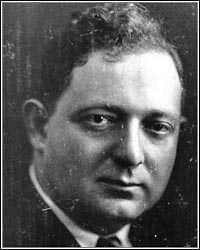

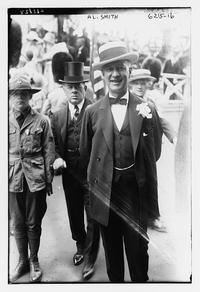
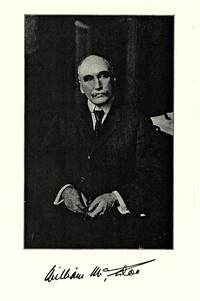
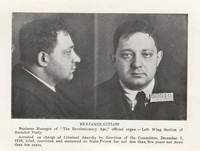
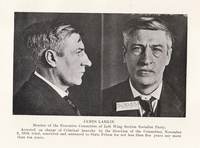
![William McAdoo [c. 1910]](/riesenfeld_images/darrow/thumbs/William_McAdoo_LC_USZ62_54248.jpg)
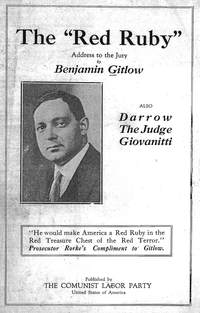
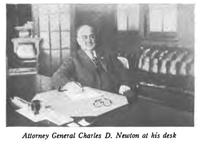

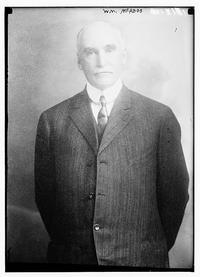
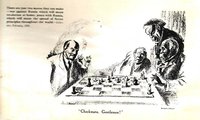
"The confidence thus engendered in these groups is well expressed by a cartoon which appears in the February issue of the Liberator," a radical magazine published in this city. It depicts the premiers of the allied countries and President Wilson seated on one side of a chess table, and Lenin on the other. The title of the cartoon is "Checkmate, Gentlemen," and it bears this legend: "There are just two moves they can make — war against Russia which will mean revolution at home; peace with Russia which will mean the spread of Soviet principles throughout the world."
Photos
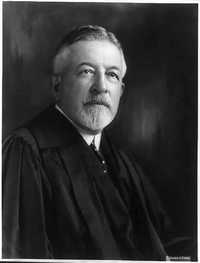

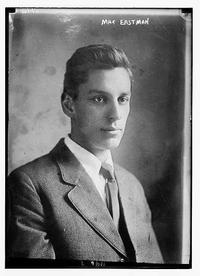
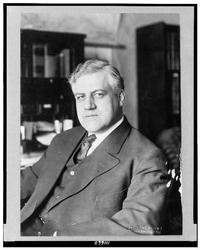
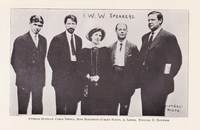
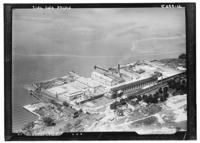
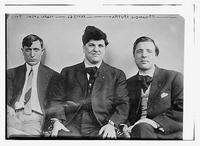
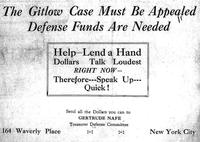
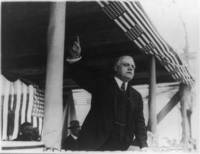
During his closing argument to the jury in the Gitlow trial Clarence Darrow quoted Abraham Lincoln's first inaugural address, "This country, with its institutions, belongs to the people who inhabit it. Whenever they shall grow weary of the existing government, they can exercise their constitutional right to amend it, or their revolutionary right to dismember or overthrow it." Darrow told the jury, "This was Lincoln. If Lincoln would have been here today, Mr. Palmer, the Attorney-General of the United States, would send his night-riders to invade his office and the privacy of his home and send him to jail."
After the Gitlow trial, on May 3, 1920 Darrow spoke at a convention of the International Ladies' Garment Workers' Union in Chicago. Darrow denounced Attorney General Alexander Mitchell Palmer for trying to discredit organized labor by issuing reports such as his "May Day scare, which had no foundation in fact." Palmer had predicted that Communists would try to overthrow the United States government on May Day 1920. Palmer issued his prediction because the previous year a series of bombings had been perpetrated by sending bombs through the U.S. mail to be delivered on May Day 1919. Palmer's prediction led to the mobilization of the National Guard and the New York City Police Department. Palmer was ridiculed when May Day 1920 passed without the predicted violence. Palmer was understandably worried about potential bombings because on June 2, 1919, several bombs were detonated by anarchists in eight American cities. One of the bombs seriously damaged Palmer's own home.\r\n\r\nLibrary of Congress, LC-USZ62-99297.
